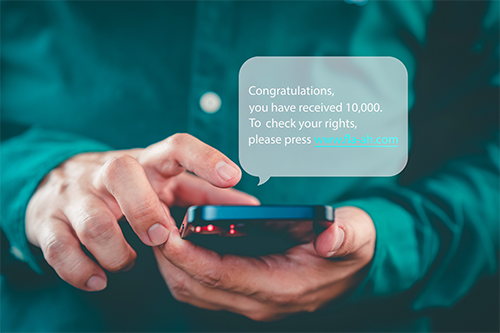No matter what your business does, it’s fair to say eliminating all the risks you face is almost impossible. However, it is possible to minimize and manage them. Although they may not apply to all kinds of businesses, one way to do that is by using customer liability waivers.
Liability waivers – sometimes called accident release forms – may help reduce any third-party bodily injury, property damage, or negligence lawsuits targeting your small business. And the risk of a small business being sued is more significant than you think.
Statistics Canada data shows almost 700,000 civil court cases went to trial in 2021. Estimates suggest half of all Canadian civil lawsuits are brought against small business owners annually.

What Is a Customer Liability Waiver?
A customer liability waiver is usually a one- or two-page contract that’s considered to be a legally binding agreement between your business and customers that you ask them to sign. It can release you and your organization from all legal responsibility if the signee is injured or harmed by participating in a specific activity.
For example, a fitness instructor who’s leading an exercise class at a gym may ask their customers to sign a liability waiver. By signing it, the customer acknowledges there’s a risk of personal injury, illness, loss of life, or risk damage to or loss of personal property from participating in a class that features lifting heavy weights and other physical activity. In addition, they agree not to hold the instructor or the gym owner responsible if they are injured.
Related Posts
Sign Up for ZenMail
"*" indicates required fields
Categories
In other words, it informs your customers of the risks they voluntarily choose to accept by participating in an activity or entering your business’s premises, and it places the responsibility for that risk back on them.
How Well Do Customer Liability Waivers Work?
A customer liability waiver won’t prevent you from being named in a lawsuit. But it can prove helpful if you’re dragged into such a situation and must defend your business in court.
For instance, let’s say you run an indoor rock-climbing gym allowing any customer to strap on safety gear and scale the walls and obstacle courses you offer. Recognizing the risk involved, you ask your customers to sign a liability waiver. For that waiver to be beneficial to you if they get injured requires three critical elements to prove they gave up their right to sue you for compensation. Those elements are:
1. How the waiver is presented to a customer by your employees
Train your employees on how to present the release to your customers. How they explain what it is, what it means when customers sign it, and why they are being asked to sign should be crystal clear. Getting a signature alone is not enough. You need to take the time and effort to adequately explain all aspects of it to them and ensure they understand it.
That means your employees should be prepared to answer any questions about the waiver they’re asked, so they should read it thoroughly and understand it too. Your staff needs to know how to highlight and explain its critical terms, namely, the sections where the customer acknowledges the voluntary assumption of risk and that they’re being asked to relinquish their rights.
Furthermore, give your customers adequate time to read the waiver before signing it. For the crucial clauses like the customer waiving their legal rights, ensure there is an “I accept” button or customer initial required for electronic versions of the waiver or initials required if paper-based.
Also, offer them an electronic or printed copy of the signed waiver afterward. If a customer declines to accept a copy of the release, have them sign or initial they chose not to receive a copy of the contract. If a customer refuses to sign the waiver, you should decline access to your building and not allow them to buy the product or service in question.
2. How the waiver is written and the language it contains
Your waiver’s content is equally vital. It outlines what it absolves you from, so it must apply to the risks your customers voluntarily choose to accept.
The language in the waiver needs to be easy to understand. Although it should be as explicit as possible, it doesn’t necessarily need to outline every conceivable potential injury a customer may suffer. The waiver must also clearly state who it protects – in this case, you, your business, and your employees. Last but certainly not least, have an experienced lawyer thoroughly review your liability waiver before using it.
3. Who your customers are that sign a liability waiver
How well do you know who your customers are? In the context of liability waivers, if English is not your customers’ primary language, you should be prepared to provide it in the language your customer prefers. Also, have employees with multi-language skills who can answer customer questions posed by someone who does not speak or read English.
Do I Still Need Business Insurance If My Customers Sign Liability Waivers?
In a word, yes! Any micro-business, small business, startup, home-based company, or self-employed professional should protect themselves with a customized business insurance policy.
Having customers sign a liability waiver vetted by an experienced lawyer can be helpful if you are threatened with a lawsuit or taken to court. But it won’t prevent a ruling against you or help you deal with the costs of defending yourself and paying compensation if you must.
Get the protection you need in a few clicks by filling out an online application for coverage with Zensurance. Our friendly licensed brokers will help get you insured in a jiffy so you can relax knowing your business and finances are protected.
Recent Posts
How to Prevent Phishing Attacks
Phishing attacks are among the most pervasive cyber-attacks against small businesses and independent professionals. Learn more about it and how to prevent your company from falling prey to it.
Zensurance Business Grant Winner 2024: Down East Dance Academy
Meet our $10,000 and $1,000 small business grant winners, their advice for other business owners and entrepreneurs, and why insurance is an essential part of their financial wellness.
5 Common Winter Business Insurance Claims
Accidents and mishaps leading to insurance claims can happen to any business owner at any time, but winter weather can raise the stakes considerably. Here are five wintertime claims our clients had to contend with and how their insurance coverage helped them recover.








